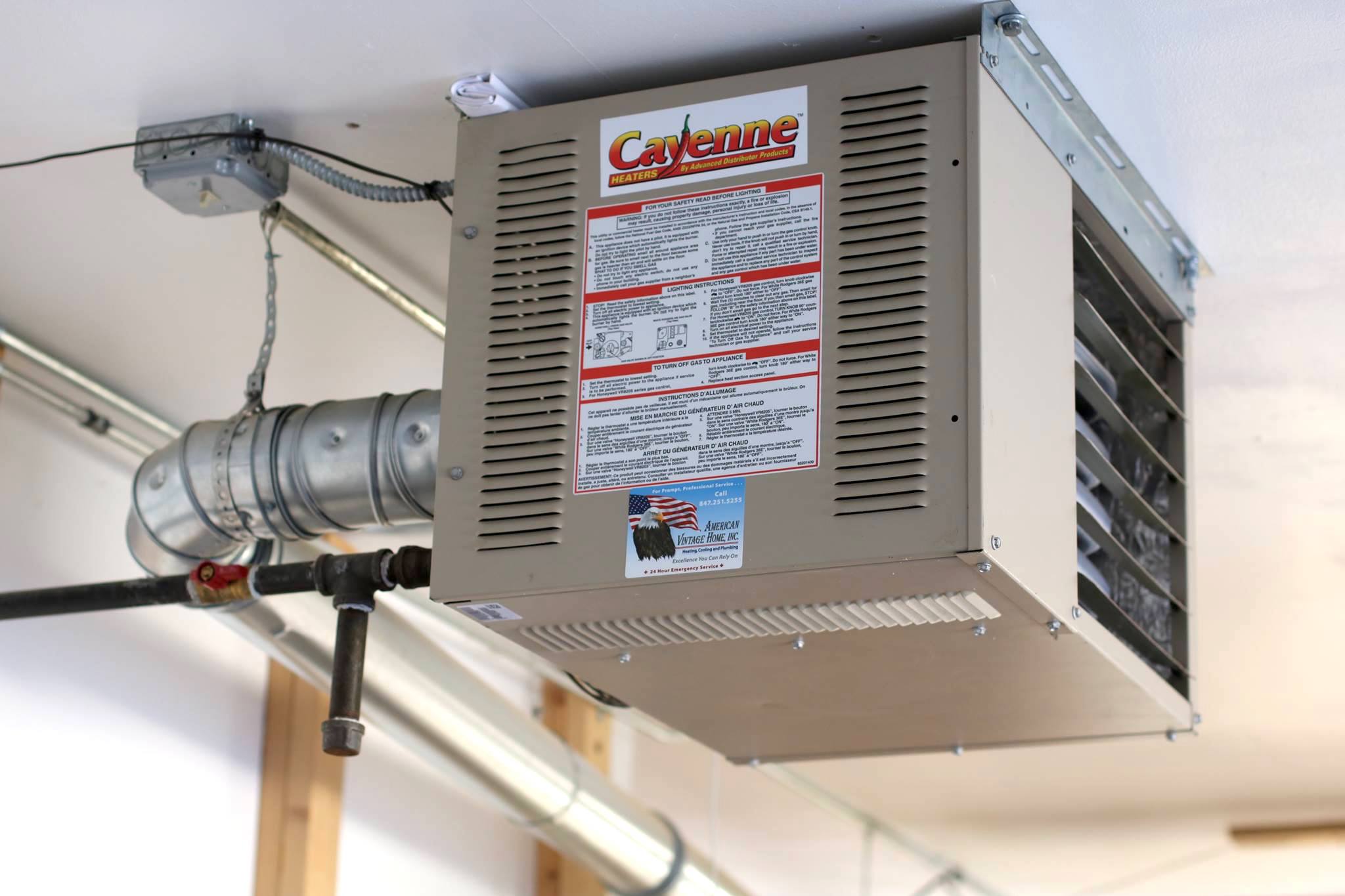Shop Heating Options
Video - December 30, 2016
One of the biggest changes I have to adapt to after moving to Colorado is the need for heat. In fact, it’s been at least 15 years since heat has been anything more than an afterthought. So I had my work cut out for me as I researched shop heating options and weighed that against my budget and what makes sense for my personal situation. So here’s a quick rundown of the options I considered and the video will go into detail on the system I installed. Special thanks to some kind folks on Facebook for providing me with images of their shop heaters.
Forced Air Heaters (Gas)
These units run on natural gas, propane, kerosene or diesel. They can be ceiling mounted or floor-standing (the kind usually found on job sites). These are pretty efficient but do require a gas supply, an exhaust, and preferably a clean air intake and a sealed combustion chamber to prevent any major issues from the presence of wood dust or finishing fumes in the air. I had three issues preventing me from going down this path. First was my gas line. Apparently there is no convenient location to tap in and we’d have to make a very long run across varied terrain and concrete. Second, the clean air and exhaust would be visible on my front porch, which would be quite an eyesore. Third, the cost was prohibitive. Because of the gas run and some other factors, the first bid I received was over $5000. Obviously I’d need to get more bids but given all three reasons combined, I decided to consider other options. Thank you Michael Valentinas for the use of your picture.
Forced Air (Electric)
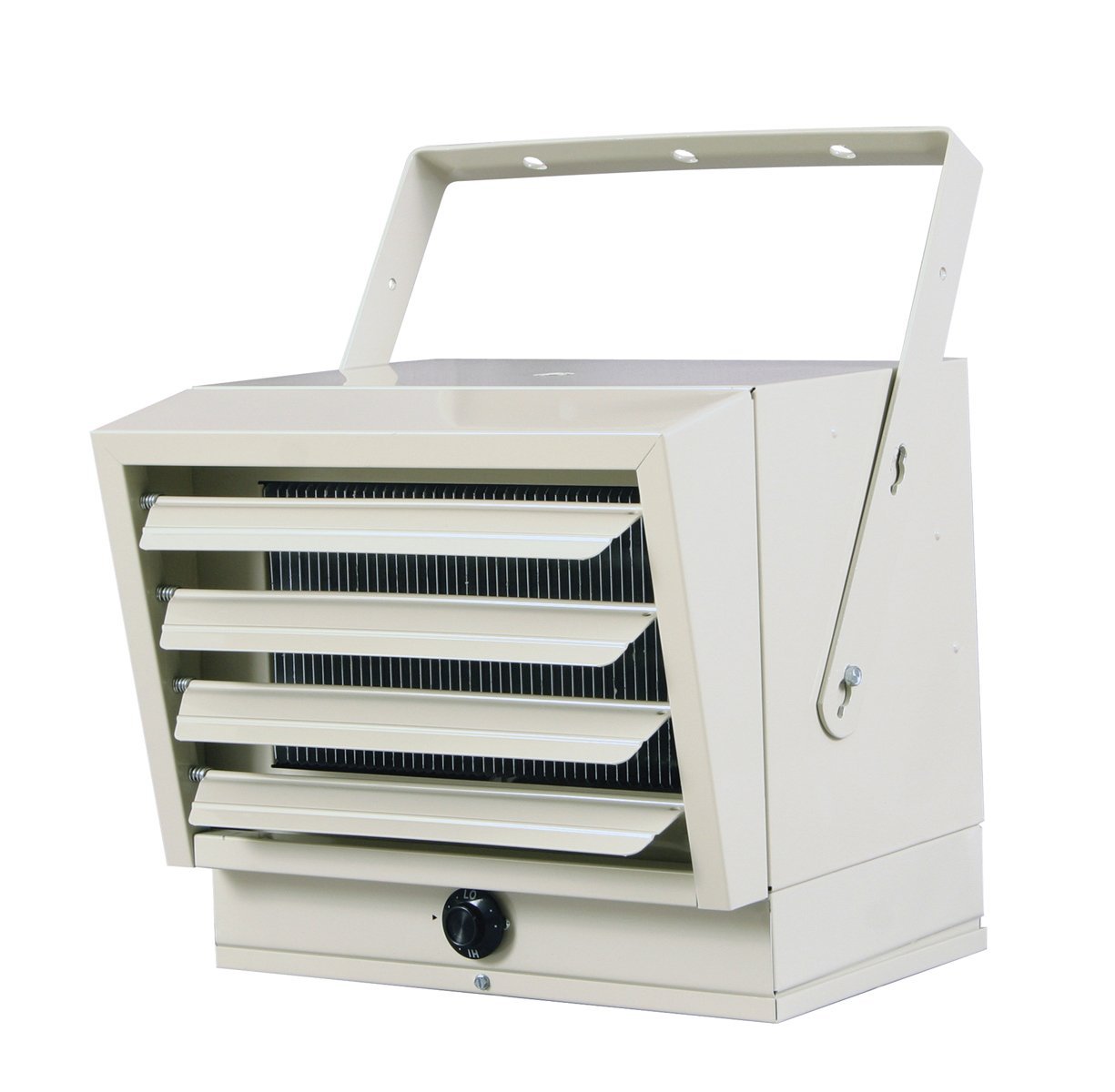 Similar in concept to the gas versions, these units rely solely on electricity to generate heat. While easy to install, the obvious drawback is the increased electric bill. This is the type of unit I installed in my shop for the sake of initial cost and ease of installation. I have both the Fahrenheat FUH54 and the Fahrenheat FUH724 installed.
Similar in concept to the gas versions, these units rely solely on electricity to generate heat. While easy to install, the obvious drawback is the increased electric bill. This is the type of unit I installed in my shop for the sake of initial cost and ease of installation. I have both the Fahrenheat FUH54 and the Fahrenheat FUH724 installed.
Infrared Tube Heat
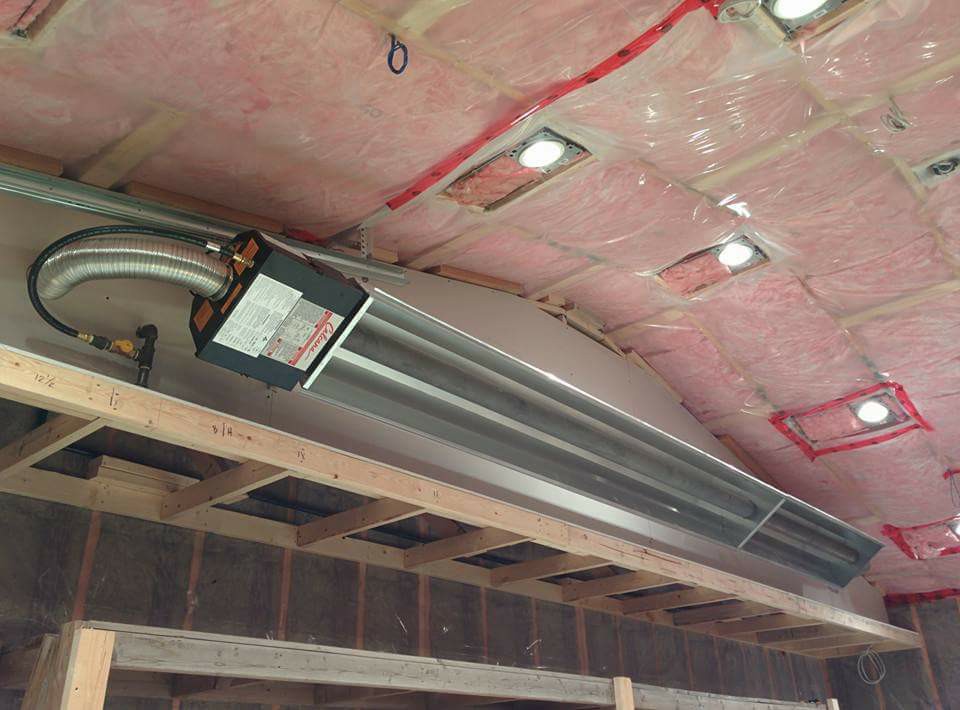 For the first couple of days of researching shop heating options I became convinced that infrared was the only way to go. It has an enclosed combustion chamber, makes very little noise, and doesn’t blow any air around the shop. They can be powered by electric or gas. The infrared energy, just like the sun, is unique in that it warms objects and bodies instead of warming the air. In fact, you can stand in front of one of these just after turning it on and immediately feel the heat on your skin. But the more research I did, the more I realized that this might not be the best option for me. First, the tubes are large and have to cover a fairly significant area of the shop to be effective. Second, this type of heat can result in hot and cold spots. At least while it’s bringing the room up to temperature, you could easily end up with a hot face and cold feet. But those who have these units installed seem to really love them, so your mileage may vary. Thank you Doug Lawrence for the use of your picture.
For the first couple of days of researching shop heating options I became convinced that infrared was the only way to go. It has an enclosed combustion chamber, makes very little noise, and doesn’t blow any air around the shop. They can be powered by electric or gas. The infrared energy, just like the sun, is unique in that it warms objects and bodies instead of warming the air. In fact, you can stand in front of one of these just after turning it on and immediately feel the heat on your skin. But the more research I did, the more I realized that this might not be the best option for me. First, the tubes are large and have to cover a fairly significant area of the shop to be effective. Second, this type of heat can result in hot and cold spots. At least while it’s bringing the room up to temperature, you could easily end up with a hot face and cold feet. But those who have these units installed seem to really love them, so your mileage may vary. Thank you Doug Lawrence for the use of your picture.
Pellet or Wood Stove
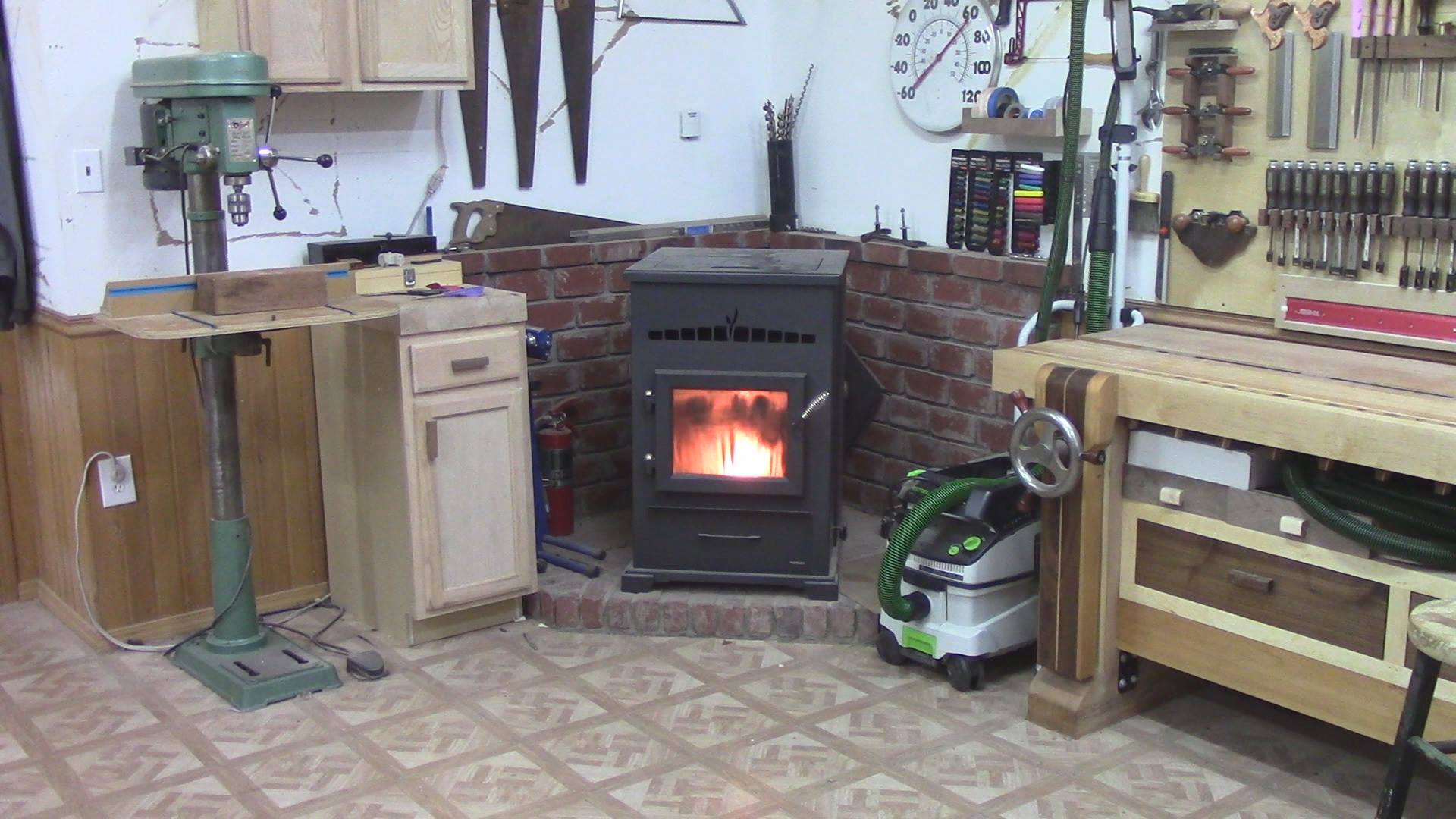 This is probably the most old school of our shop heating options. You simply drop a big old oven in the shop and start burning stuff. These things can really crank out the heat but you do have to keep stocked up on fuel and if you are concerned about kids or pets, this could be a big safety issue. Also, there could be insurance and code ramifications of installing something like this in a residential garage space. Thank you Kevin Culver for the use of your picture.
This is probably the most old school of our shop heating options. You simply drop a big old oven in the shop and start burning stuff. These things can really crank out the heat but you do have to keep stocked up on fuel and if you are concerned about kids or pets, this could be a big safety issue. Also, there could be insurance and code ramifications of installing something like this in a residential garage space. Thank you Kevin Culver for the use of your picture.
Ductless Mini Split Heat Pump
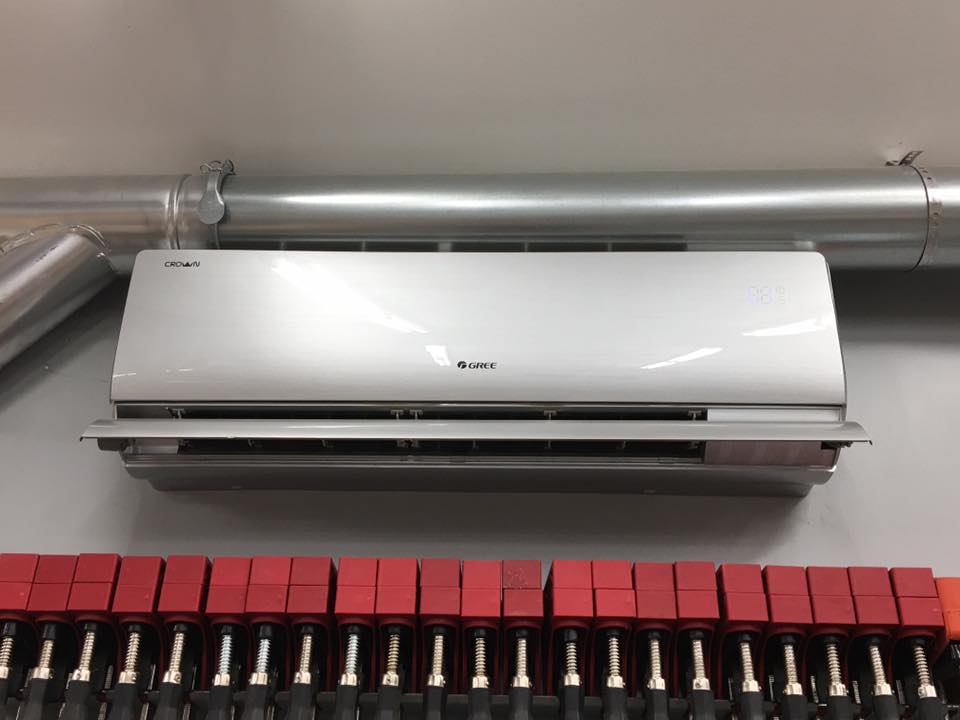 This one is near and dear to my heart since I’ve been running these in Arizona for the last 5-6 years, though I can count on one hand the number of times I used the heat setting. These units consist of an outside compressor unit and an indoor head unit that blows warm or cold air into the space. they are very energy efficient and quiet. As a heater, they aren’t very aggressive and they generally won’t work very well once the temperature drops to a certain point. I brought one of these with me from Arizona but as you’ll see in the video, things just didn’t work out. Thank you Matt Kummell for the use of your picture.
This one is near and dear to my heart since I’ve been running these in Arizona for the last 5-6 years, though I can count on one hand the number of times I used the heat setting. These units consist of an outside compressor unit and an indoor head unit that blows warm or cold air into the space. they are very energy efficient and quiet. As a heater, they aren’t very aggressive and they generally won’t work very well once the temperature drops to a certain point. I brought one of these with me from Arizona but as you’ll see in the video, things just didn’t work out. Thank you Matt Kummell for the use of your picture.
Radiant In-Floor Heating
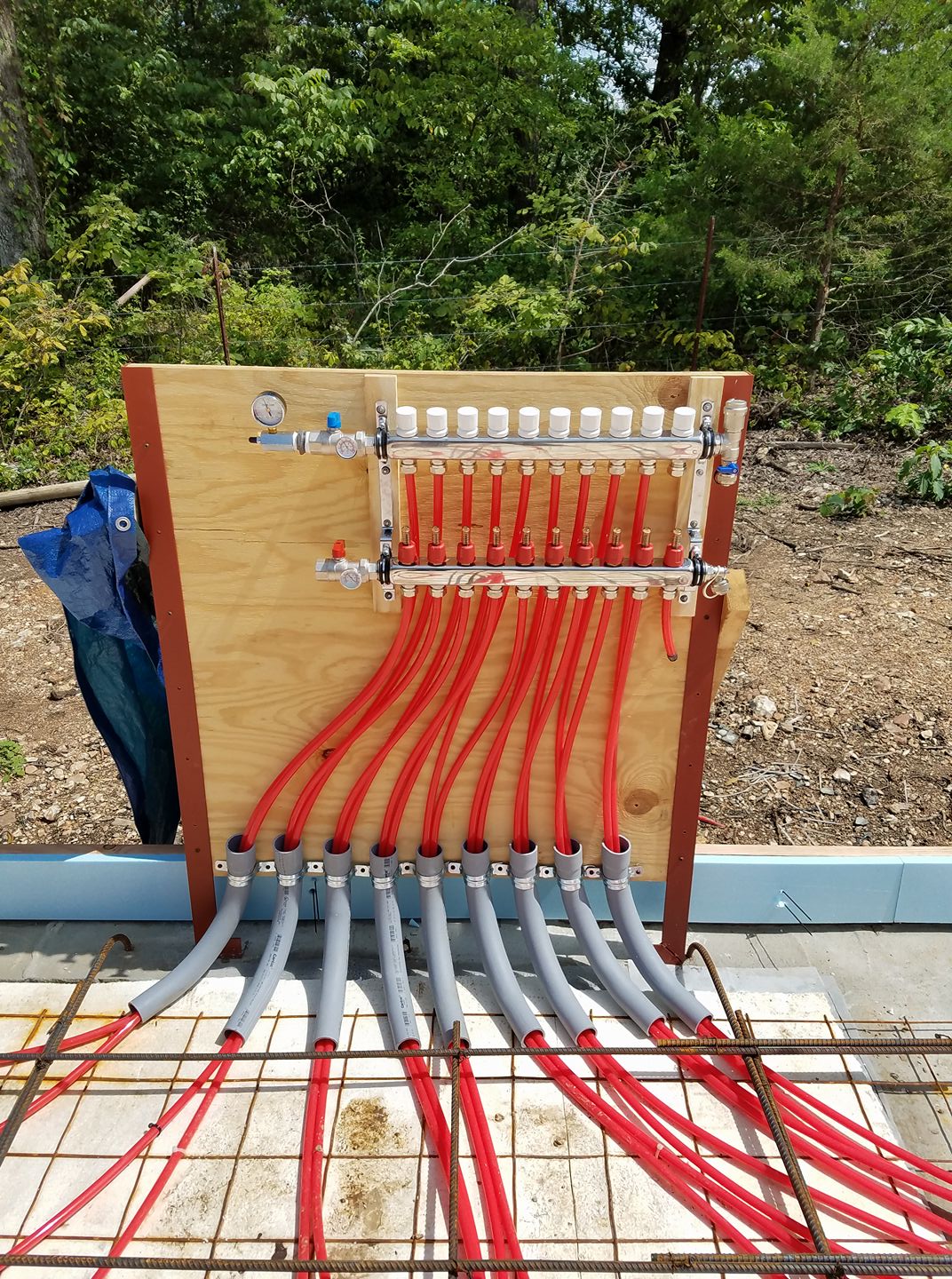 After all of my research I have to say this is, in my opinion, the gold standard in comfortable efficient heating. A properly installed radiant system will heat the entire space from below evenly and without the need for extremely high temperature heat sources. But it generally does require installation prior to pouring the slab. There are ways to install it in a new sub-floor on top of the slab, but that’s a long ways away for me so even though I think this is the best solution, it’s just not practical right now. Thank you Nathan Jobe for the use of your picture.
After all of my research I have to say this is, in my opinion, the gold standard in comfortable efficient heating. A properly installed radiant system will heat the entire space from below evenly and without the need for extremely high temperature heat sources. But it generally does require installation prior to pouring the slab. There are ways to install it in a new sub-floor on top of the slab, but that’s a long ways away for me so even though I think this is the best solution, it’s just not practical right now. Thank you Nathan Jobe for the use of your picture.
Obviously there are quite a few other options available to woodworkers, but these seem like the most popular and accessible. If you have experience with one of these heating units or one I didn’t mention here, please feel free to comment below.
My Setup
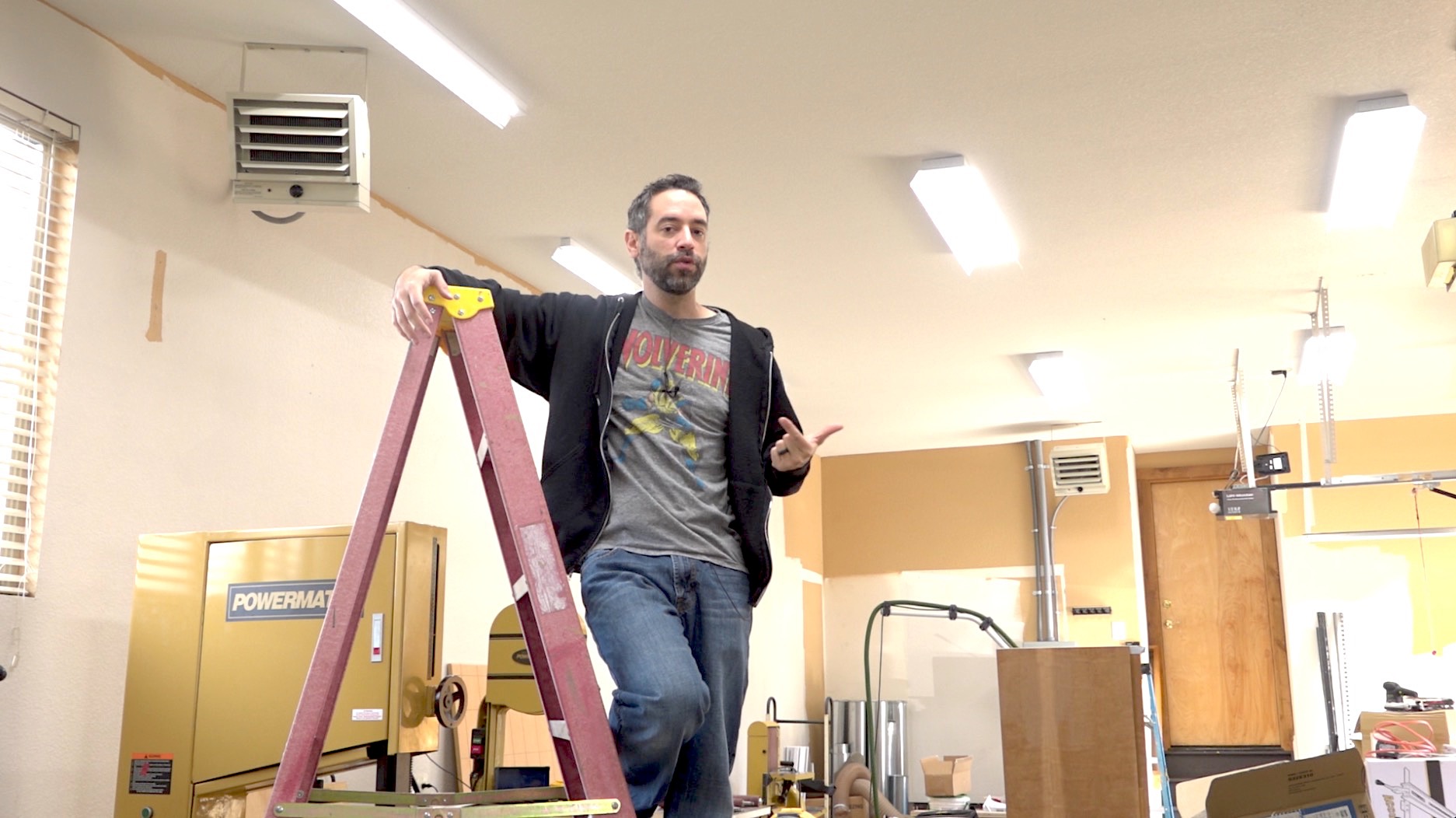 In the end, I decided to go with two forced air electric heaters. The video gives you all of my reasons why but I can tell you that these things work incredibly well. One the coldest days, I can get the shop up to a very comfortable working temperature (mid-60’s) within 45 minutes. Most days I wind up turning the more powerful unit off and turning the smaller unit down just to keep the chill away. So while I do anticipate a nice increase in my electric bill, these things don’t need to run constantly to be effective in my space. And just so you know, I have an insulated 4-car garage that’s about 950 sq ft.
In the end, I decided to go with two forced air electric heaters. The video gives you all of my reasons why but I can tell you that these things work incredibly well. One the coldest days, I can get the shop up to a very comfortable working temperature (mid-60’s) within 45 minutes. Most days I wind up turning the more powerful unit off and turning the smaller unit down just to keep the chill away. So while I do anticipate a nice increase in my electric bill, these things don’t need to run constantly to be effective in my space. And just so you know, I have an insulated 4-car garage that’s about 950 sq ft.
Let us know what shop heating options you prefer!
